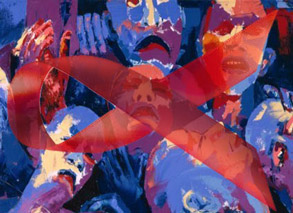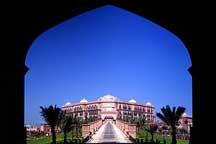 Apr. 15, 2025
Apr. 15, 2025
Weather
The Daur ethnic minority
2009-08-07 10:11 BJTTraditional Economy and Customs
Before the founding of the People¡¯s Republic of China in 1949, the Daurs had a well developed agriculture, with per-hectare yield of grain reaching 350 kg. They raised horses and oxen. Those living in the mountainous north of the area were also engaged in hunting, charcoal burning, edible plants gathering, tanning, and the manufacture of carts and wooden pipes. Distribution of land and animals was very uneven, with the big landlords exploiting the majority of the people.
Monogamy was the general rule, and marriages were arranged by the parents. A man from a different clan would go to live with his wife's family, but had no claim of their property. Closest ties are those between brothers-in-law. All important celebrations require the presence of the brothers-in-law and their families, who send gifts to new-born children.
The religion of the Daurs was shamanism, while a few were followers of Lamaism. The biggest festival of the year was held in May, when pigs and oxen would be sacrificed to the gods to ensure prosperity for the coming year. At the Spring Festival, sacrifices were made to the ancestors and firecrackers set off in the evening. Everyone joined in a round of visits to their neighbors to partake of steamed New Year cakes and give presents of various delicacies.
Pipes are passed to visitors, men and women alike, as a sign of respect. Girls make elaborate tobacco pouches and slip them into the pockets of young men who take their fancy.
Wrestling, horse racing and archery are popular sports among the Daurs. They also play a kind of football with a ball made of ox hair.
Daur villages are neat, usually built on mountain slopes and facing streams, and the houses have courtyards surrounded by wickerwork fences.
The women have always been renowned for their needlework, decorating their clothing with fine patterns. Men wear straw hats in summer or simply tie a piece of white cloth around their foreheads. In winter they wear leather caps with ear flaps. Women wear white cloth socks and patterned shoes in summer, donning leather boots and long gowns in winter.
Typical of the daily diet of the Daurs is millet or buckwheat noodles mixed with milk, buckwheat cakes and oat porridge cooked with soybeans. Game figures high on the list of Daur delicacies, especially deer meat, pheasant and duck. They cultivate a variety of vegetables.
Inseparable from the Daur scene is the "leleche" -- a small cart with large wheels drawn by an ox.
 Mail
Mail Share
Share Print
Print


 Video
Video









 2009 China Central Television. All Rights Reserved
2009 China Central Television. All Rights Reserved